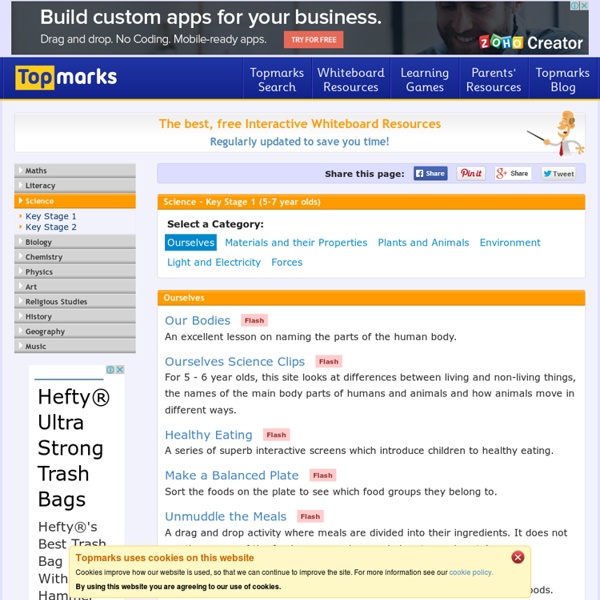Interactive Whiteboard Resources: Science, Key Stage 1 - Topmarks Education

Interactive Whiteboard Activities During Reading | Teaching Literacy in the Early Years
Posted by Miss Kelly Jordan on Sunday, June 19th 2011 I first got an interactive whiteboard in my classroom in 2008. I was teaching Prep at the time and it was a steep learning curve to discover how I could best use it to engage my students and improve learning outcomes. Fast forward three years and I am teaching Grade Two in an open classroom with Kathleen Morris. We use the IWB during our twenty minute blogging session every day, and it is often used for our CAFE reading strategy too. Below are just a few of the games our students have used this year. Read Write Think (Construct a Word) – This was used by some of our weaker readers, who were focussing on using beginning and ending sounds in words when reading. Wall of Words – This game focuses on sequencing sentences correctly and adding correct punctuation. Alphabet Soup – Students need to read and comprehend a question and think of a possible answer using jumbled letters. What websites do your students use during Literacy?
Related:
Related:



